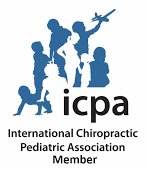Living with scoliosis as an adult isn’t always easy. The sideways curve in the spine can lead to more than just a visible posture change—it may cause ongoing discomfort, breathing issues, and a lower quality of life. Some adults were diagnosed in their teens, while others don’t realize they have scoliosis until symptoms start showing up later in life.
Often, people end up trying treatments that only offer short-term relief. Medications might dull the pain, but they don’t fix the root of the problem. And surgery can be a big step, with serious risks and a long recovery. So, where does that leave you? For many adults with scoliosis, the big question becomes: Is there a safer, more natural way to manage it? Below, we answer this question and more, but first, let’s start with some basics.
What is Adult Scoliosis?
Scoliosis in adults typically falls into two main categories: adult idiopathic scoliosis and degenerative scoliosis. Each has different characteristics that influence treatment approaches.
Adult idiopathic scoliosis is essentially a continuation of adolescent scoliosis into adulthood. The spinal curves that develop during the growth years persist, sometimes remaining stable but often progressing slowly over time. Many adults with this form of scoliosis have learned to accommodate their condition but may find that symptoms increase as they age.
Degenerative scoliosis, on the other hand, develops in adulthood due to wear and tear on the spine. As spinal discs deteriorate and facet joints wear down, the spine can begin to curve sideways. This type of scoliosis typically appears after age 50 and can progress more rapidly than idiopathic forms.
Both types can cause similar symptoms, such as:
- Back pain, often worse with standing or walking
- Uneven shoulders or hips
- Noticeable leaning to one side
- Reduced flexibility
- Numbness or weakness in the legs
- Breathing difficulties in severe cases
- Decreased height over time
The severity of these symptoms doesn’t always correlate directly with the degree of curvature—some people with significant curves experience minimal discomfort, while others with milder curves report substantial pain.
How Chiropractic Care Addresses Adult Scoliosis
Chiropractic approaches to adult scoliosis focus on improving function, reducing pain, and enhancing quality of life—rather than attempting to “fix” or straighten the curve completely. This realistic approach produces meaningful benefits for many patients while avoiding unrealistic expectations.
Your Plano chiropractor begins with a thorough evaluation that goes beyond simply measuring the curve. This assessment typically includes:
- Analysis of posture and movement patterns
- Evaluation of spinal flexibility and stability
- Assessment of muscle strength and balance
- Identification of compensatory mechanisms your body has developed
- Review of previous imaging and medical history
This detailed approach helps your chiropractor understand how scoliosis affects your unique body and develop an appropriate treatment plan. Rather than taking a one-size-fits-all approach, they can target the specific factors contributing to your discomfort.
Contrary to what some might expect, chiropractic care for scoliosis doesn’t involve forceful attempts to straighten the spine. Instead, specialized gentle adjustment techniques focus on:
- Mobilizing restricted joints within the curve
- Reducing pressure on compressed nerves
- Addressing secondary issues in the neck, shoulders, and pelvis
- Improving overall spinal function
These precise adjustments help reduce pain and improve mobility by optimizing the function of the spine in its current configuration rather than trying to force dramatic structural changes.
For adult patients with scoliosis, even small improvements in joint mobility and nerve function can translate to significant pain reduction and improved daily function.
The Benefits Beyond Pain Relief
While pain reduction is often the primary goal for adults seeking scoliosis care, chiropractic treatment offers additional benefits that contribute to overall well-being.
Improved Posture and Body Awareness
Through consistent chiropractic care, many patients develop improved posture and greater body awareness. Your chiropractor can help you understand how to hold and move your body in ways that minimize strain and maximize function, even with your unique spinal configuration.
This heightened awareness extends beyond your chiropractic visits, empowering you to make small but meaningful adjustments throughout your day that collectively reduce the burden on your spine.
Enhanced Breathing Function
The ribcage connects directly to the thoracic spine, which means that scoliosis can restrict breathing capacity. By improving mobility in the thoracic region, chiropractic adjustments may help increase lung capacity and breathing efficiency.
Slowed Progression in Some Cases
While chiropractic care cannot reverse established structural curves in adults, some evidence suggests it may help slow progression in certain cases. By improving overall spinal function and reducing asymmetrical pressures, chiropractic treatment may help stabilize curves that would otherwise continue to worsen.
Are you living with scoliosis and wondering if chiropractic care might help your specific situation? At Keystone Chiropractic, our experienced and caring chiropractic team is ready to help. Book your appointment today.





